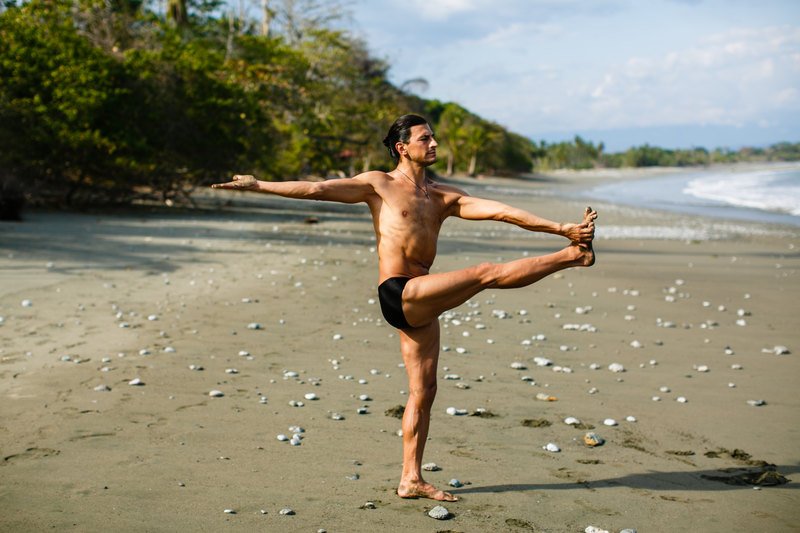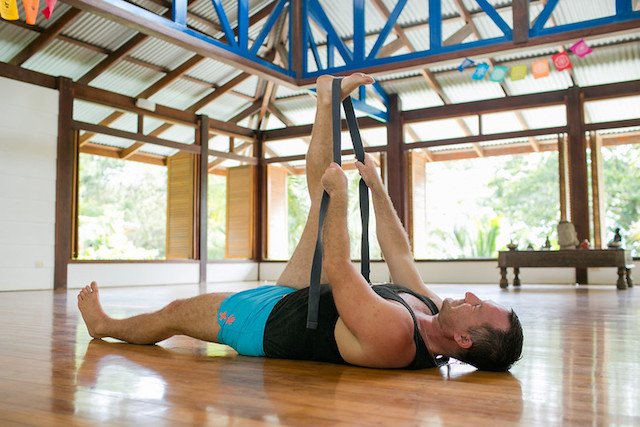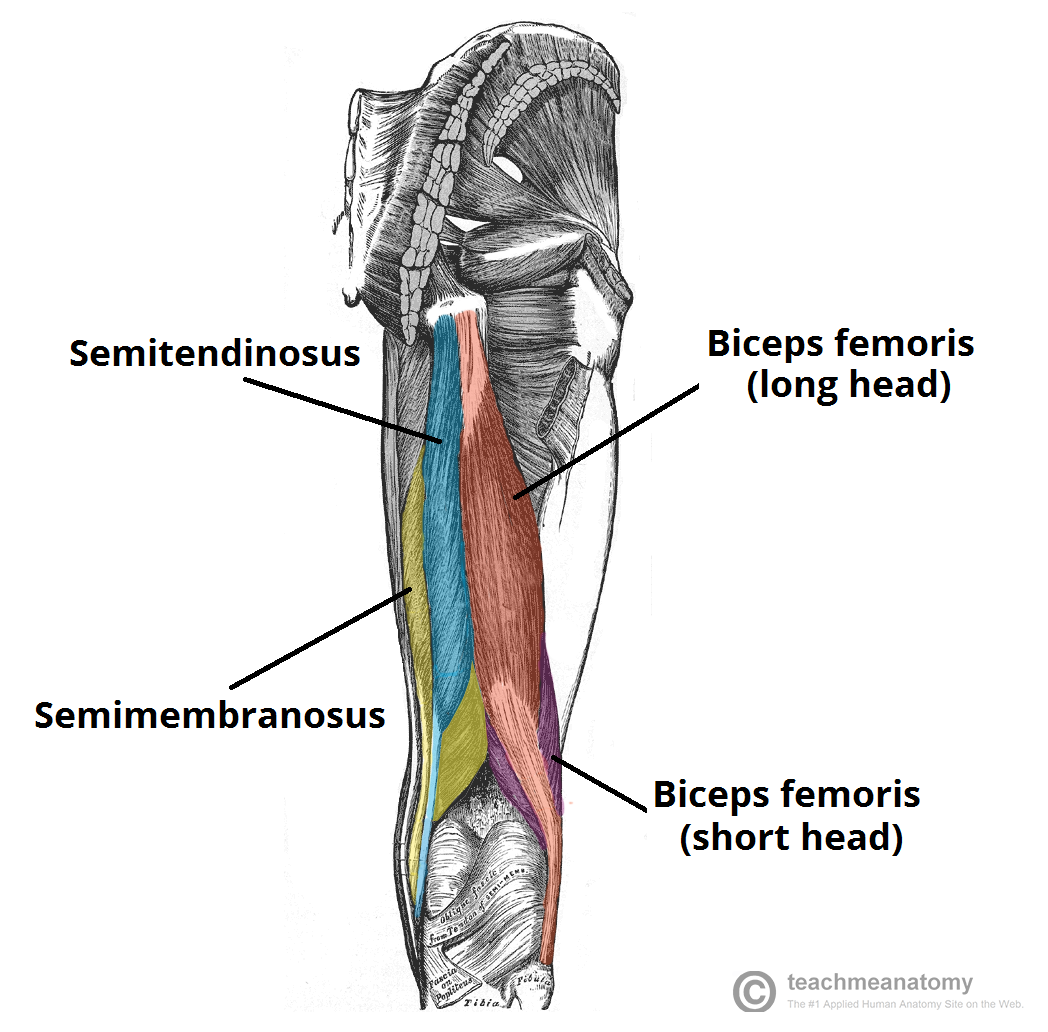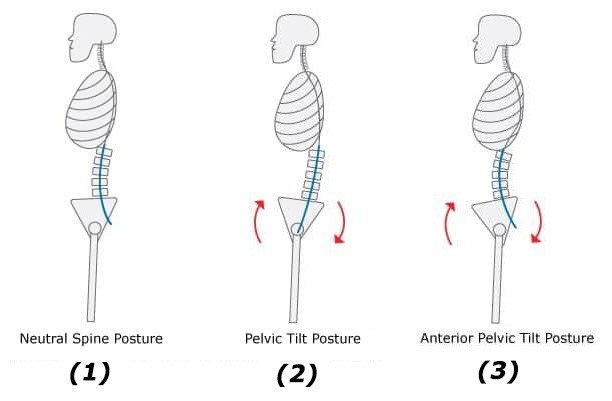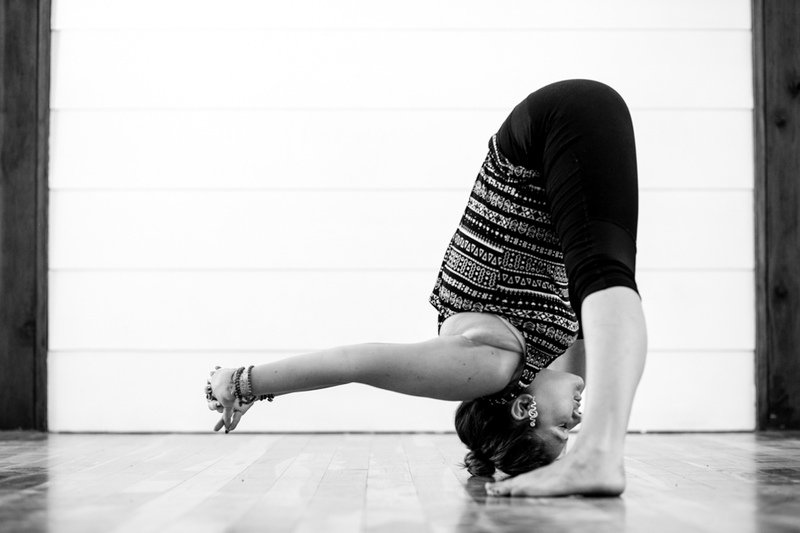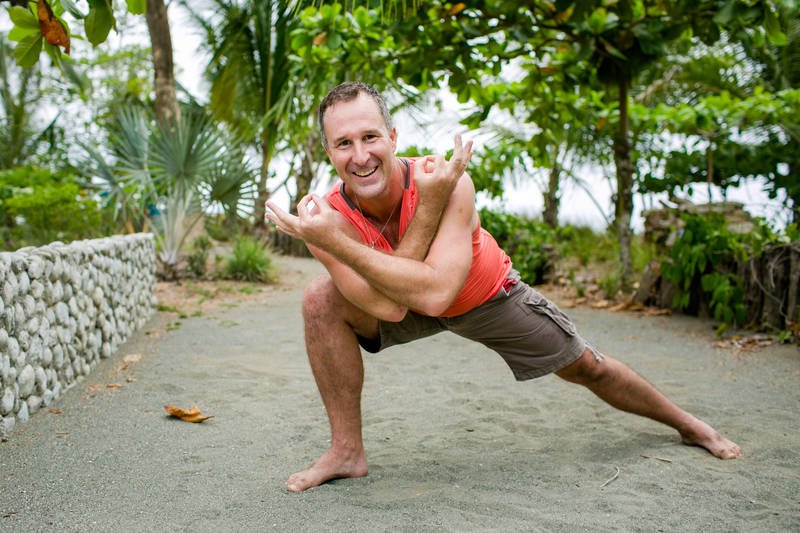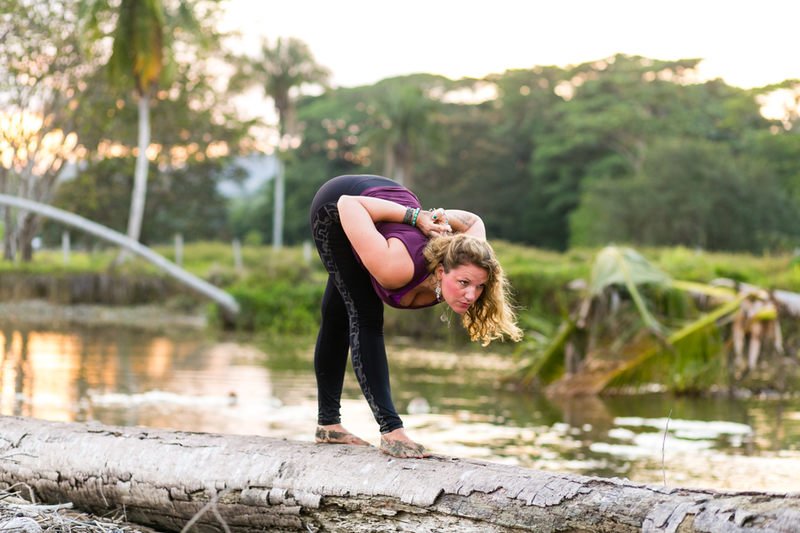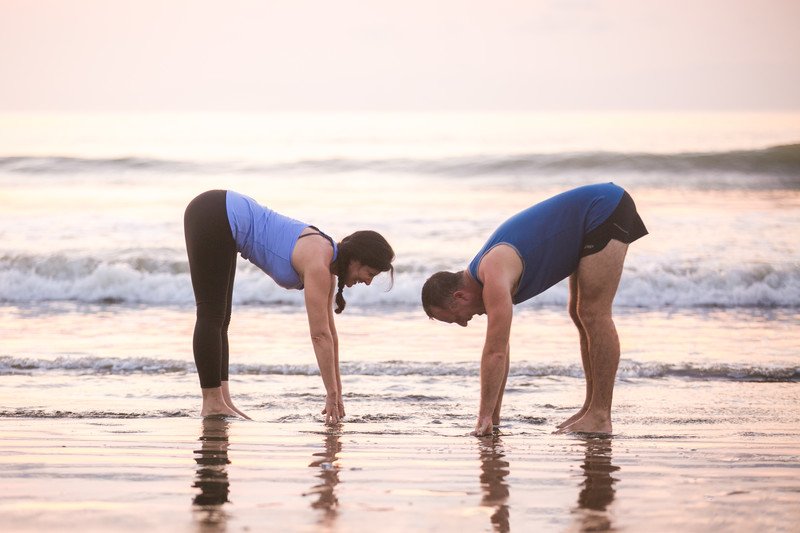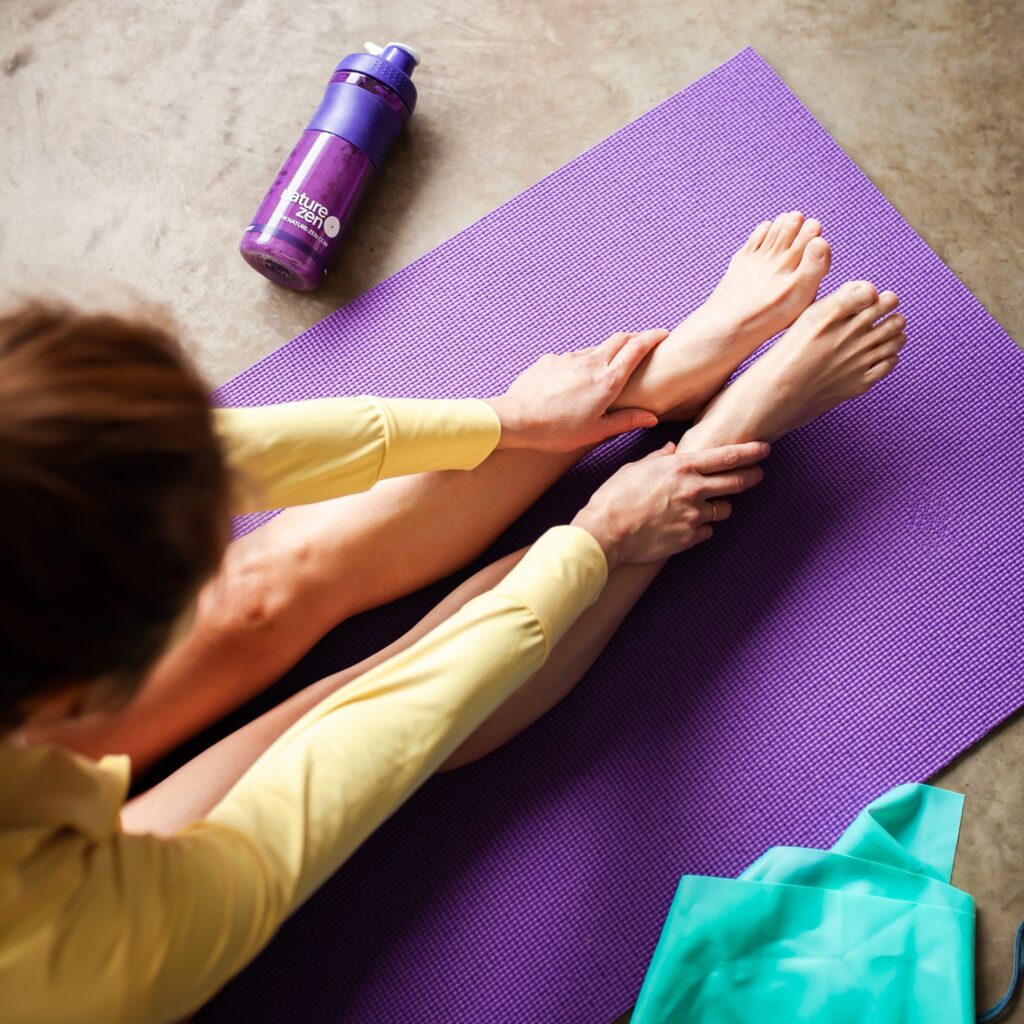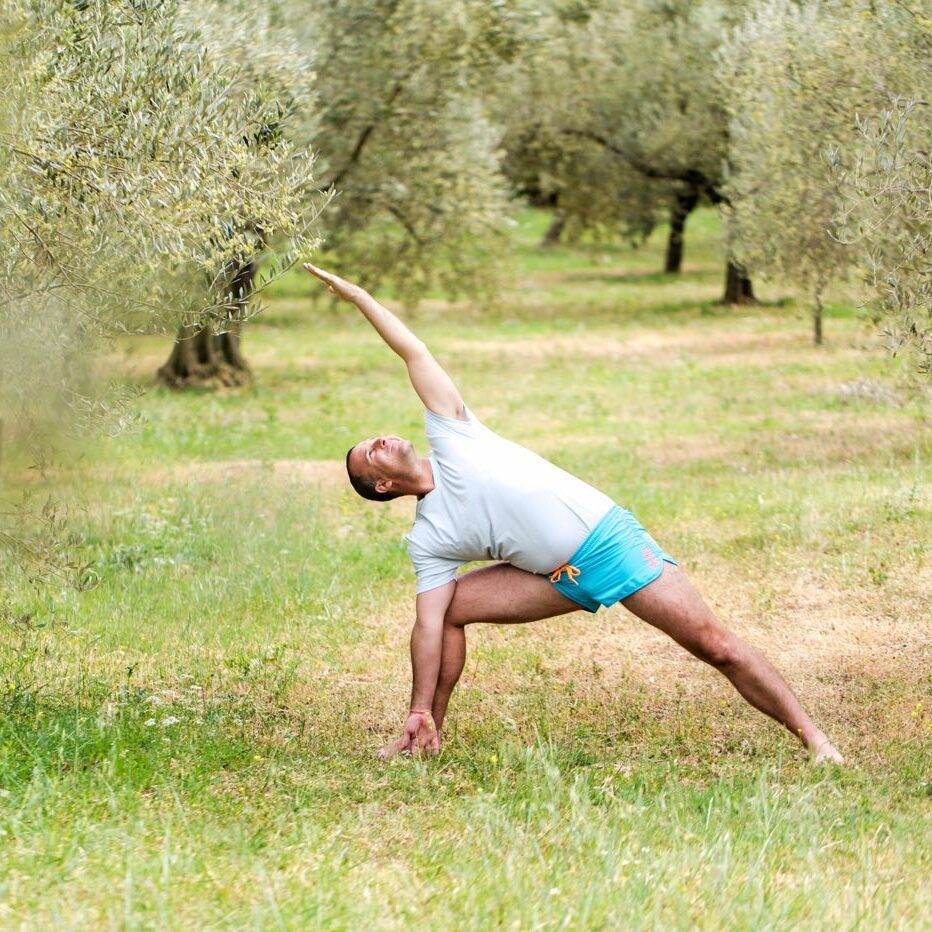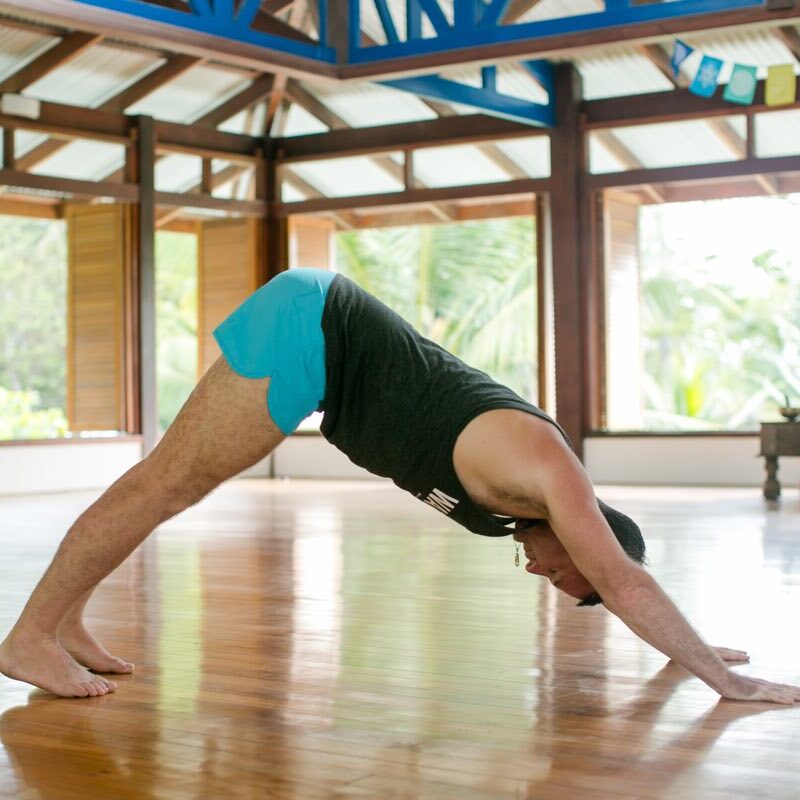Do you struggle with tight hamstrings?
If so, then you already understand just how frustrating hamstring pain and tightness can be!
From walking to bending to squatting, the hamstrings are responsible for countless day-to-day hip and knee movements. In fact, they’re one of the most important muscle groups in the body.
Because the hamstrings are so crucial to movement, they are also one of the most injury-prone areas in the body.
It doesn’t matter if you’re a top-level athlete or if you spend most of your day sitting at an office desk, you’re still susceptible to hamstring tightness and pain.
And, because the hamstrings are so crucial to everyday activities, that probably means the pain will manifest elsewhere in your body, negatively impacting your quality of life.
Ready for some good news?
Your recovery starts right now.
In this article, I explain why you’re dealing with tight hamstrings and will reveal the #1 thing you should start doing today — and the common mistake you should absolutely avoid to minimize further injury. (This one hack alone could save you years of physical therapy and healing.)
Let’s get started.
What Causes Tight Hamstrings?
Before I reveal my proven method for relieving tight hamstrings, it’s helpful to understand why hamstring tightness is occurring. When we know what’s really going on in the body, then we can use the proper tools to alleviate pain and — just as importantly — prevent future injury.
The Anatomy of Your Hamstrings
Your hamstrings consist of three long, thin muscles:
- The semitendinosus
- The semimembranosus
- The biceps femoris
Tendons connect these hamstring muscles to bones in the pelvis, knees, and lower legs.
Take a look at this great visualization of the hamstring muscles. You can see:
1. The semitendinosus muscle is at the back of the thigh, where it rests between the two other hamstring muscles. The semitendinosus starts at your pelvis and extends to the tibia (the shin.) It’s the longest of the hamstring muscles.
2. The semimembranosus reaches from the pelvis to the back of the tibia. This muscle is located at the end of the thigh, allowing it to extend so that the tibia can rotate and the knee can flex. The semimembranosus is the largest of the hamstring muscles.
3. The biceps femoris is located on the outer part of the thigh. This muscle extends to the top of the fibula bone by the knee. The biceps femoris allows your knee to flex and rotate and for your hip to extend. There are two parts to the biceps femoris:
- The long head attaches to the posterior lower rear part of the ischium (hip bone.)
- The short head attaches to the femur (thigh) bone.
6 Common Causes of Tight Hamstrings
Do you feel pain or stiffness in the back of your legs? This may be due to tight muscles. However, there are a variety of factors that can cause hamstring pain and discomfort. Let’s take a look at a few of the most common:
1. Genetics
If you’re experiencing tightness or soreness in your hamstrings, it might be due (at least in part) to genetics. Some people are born with short hamstrings, while others are born with longer and looser ones! Generally speaking, women are born with more mobility than men.
However, no matter your genetics, specific muscle activation techniques can be used to relieve hamstring tightness. I’ll get to these in a sec.
2. A lot of exercises (and not a lot of muscle activation)
You don’t have to be a pro athlete to realize that exercise can tighten your hamstrings. Anyone who’s ever gone for a long jog or hike has likely experienced the tightening effects!
Now, a word of caution . . .
Many “experts” will tell you to stretch before and after a workout to loosen up your muscles.
I’m here to tell you right now that it’s time to stop the flexibility madness.
Stretching often does more harm than good — especially when you’re trying to “stretch out” an injury. So, what are you and your tight hamstrings to do?
Applied Yoga Anatomy + Muscle Activation™.
Again, I’ll share more about this powerful practice below.
3. Weakness in the lower back
There is a direct correlation between tight hamstrings and lower back pain.
Pain or weakness in the lower back may cause pain or weakness in the hamstrings (and vice versa.)
The reason for this is simple.
Take a look at the diagram of the hamstring muscles one more time. You can see that the hamstrings originate at the pelvis. So, if the hamstrings are tight, they will pull on the pelvis and cause it to tilt. Ergo a posterior tilt.
This tilt pulls your pelvis out of alignment, so your lower back must try to compensate in other areas and movement, ultimately causing tight hamstrings.
Our goal should always be to have a neutral and healthy spine for optimal mobility in the body.
4. Neural tension
Sometimes, hamstring tightness isn’t caused by a physical imbalance in the body but a physiological one. More specifically, neural tension is:
“An abnormal physiological and/or mechanical response from the nervous system that limits its normal range of motion or stretch capabilities.”
When neural tension occurs, it usually has nothing to do with physical tightness in the hamstrings. Instead, the nervous system is signaling a pain response.
With the right Muscle Activation Techniques, we can “fire up” the muscles to re-establish the communication pathways between the nervous system and the muscles — and eliminate pain for good.
5. Previous hamstring strain
A significant factor in predicting a hamstring injury is whether or not you’ve injured your hamstring before. Treatment for tight hamstrings or a hamstring injury is crucial. If you do not give your body enough time to rest and heal — or, worse yet, try to “stretch out” the injury — you’re likely to re-injure yourself.
6. Tendinosis
Tendinosis is a chronic condition where collagen deteriorates in the tendons. Collagen is a structural protein that is necessary for healthy muscle functioning and movement. When the collagen breaks down in the tendons, it’s usually from overuse.
Tight hamstrings may be due to one or a combination of the above factors. Whatever the reason, be kind to your body. More severe injury may occur if you don’t allow time for proper rest and healing. Then, incorporate the Applied Yoga Anatomy and Muscle Activation techniques I share later in this article. You’ll leave the pain behind for good, so you can get back to living and loving your life.
What Problems Can Tight Hamstrings Cause?
Maybe you’ve got tight hamstrings, but you don’t have any pain. If that’s you, you might be wondering: “What’s the big deal about tight hamstrings, anyway?”
Well, one of the main problems with tight hamstrings is the increased risk of additional injury. This further injury may take the form of:
1. Muscle strain/tearing
If you’ve ever had a torn muscle, you know just how painful it can be! When your muscle is tight, and you force it to move further than it can currently go, straining or tearing is more likely to occur. Unfortunately, this can happen when inexperienced yoga teachers and instructors encourage you to over-stretch.
2. Popliteus injury
The popliteus is a muscle located at the back of the knee. It’s what helps to unlock the knee from a straightened position. If your hamstrings are tight, it may cause an extra strain on the popliteus muscle or tendon. This strain happens because straightening your knee is much more difficult with tight hamstrings.
3. HIp and pelvis rotation (AKA: back pain)
Pain in the back is a significant risk if your hamstrings are tight. As I mentioned above, tight hamstrings can cause the hips and pelvis to rotate out of proper alignment. The shortness in the hamstrings tilts the pelvis backward, which flattens the back. This flattening in your back may be the reason for the pain that comes along with tight hamstrings.
Speaking of back pain and tight hamstrings, I want to quickly explore this correlation further. So many of my students come to me with chronic back pain. However, once you better understand the correlation, healing is possible.
The vital correlation between tight hamstrings and lower back pain
We’ve already explored how tight hamstrings cause the pelvis to tilt backward, which strains the back and causes pain. But what’s really going on in the joints and muscles?
The ischial tuberosities are the parts of the pubic bone that the hamstrings pull on when they are tight. Adjacent joints move at the same time because they are “coupled” together in movement.
When the pelvis tilts back, the vertebrae in your lower back flex forward. When this happens, any lifting or bending forward motion uses flexion from the lower spine.
The thing is . . .
This is not how the spine functions in a natural state. Flexion in the lower spine puts a strain on ligaments around the vertebrae and can make bulging disks worse. This is why tight hamstrings can cause back pain — and possibly even back spasms.
How to treat tight hamstrings and relieve back pain
Now that we’ve thoroughly covered the reasons for and problems resulting from tight hamstrings, it’s time to dive into the good stuff . . .
. . . How to treat tight hamstrings!
There are many healing avenues from which to choose. The right way forward depends on your unique needs. Most hamstring injuries can heal on their own with proper time, rest, and Muscle Activation Techniques.
Start with RICE
If you’re dealing with a new hamstring injury or pain from repetitive use, it’s crucial to rest and recover. Here’s a tried-and-true method with which to begin:
1. Rest
Resting your leg is most important, especially if your pain/injury is severe. Take it as a signal from your body to press the “pause” button.
2. Ice
Ice will help to reduce the pain and swelling associated with tight hamstrings or a hamstring injury. Use ice for 20-30 minutes at a time every three to four hours until your pain is gone. Depending on the severity of your pain, this may be necessary for a few days.
3. Compress
An elastic band wrapped around the injury can help to reduce the swelling.
4. Elevate
Elevation helps to reduce blood flow and reduces swelling, too.
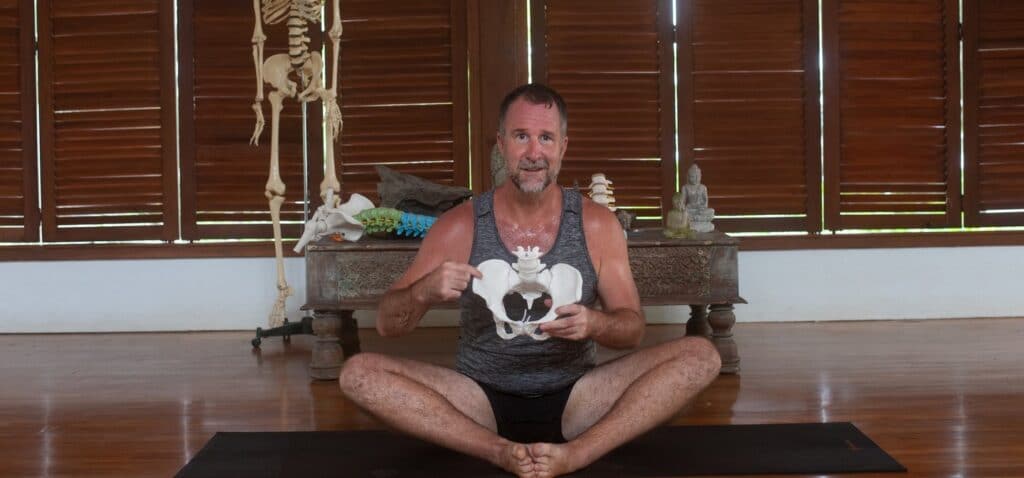
Cure tight hamstrings with these Applied Yoga Anatomy + Muscle Activation Techniques
Besides the immediate rest actions mentioned above to reduce hamstring pain and swelling, there is also yoga for tight hamstrings. Yoga can help bring mobility back into your muscles and heal hamstring tightness.
But here’s the thing . . .
Stretching will only lead you to more pain.
Why?
Because flexibility inevitably leads to instability. And where there is instability, injury is sure to follow.
Now, I know many of you are thinking:
Wait a minute — I thought you just said yoga can reduce hamstring pain and swelling?
Yes, yoga absolutely can support you on your healing journey! However, the yoga world is obsessed with stretching — and that’s a paradigm that needs to change.
The problem is, stretching muscles is synonymous with forcing muscles to go beyond their capacity to lengthen or shorten. This is the #1 mistake most people make when using yoga on their healing journey.
When we look at relieving tight hamstrings from an Applied Yoga Anatomy + Muscle Activation™ perspective, we realize our goal is to improve muscle function.
I’ve written a complete guide to Applied Yoga Anatomy + Muscle Activation™. I recommend giving it a quick read first. Then, proceed with the following yoga poses with the awareness to create profound healing in the body, starting today.
Applied anatomy yoga flow for tight hamstrings
Hold each of the following poses for 7-10 slow breaths, then repeat on the other side of the body.
1. Downward Dog: Adho Mukha Svanasana
Come into this posture with your knees bent generously. First, focus more on keeping a straight spine with your tailbone tilted up to the sky. With your heart-melting back towards your legs, start to bend into one knee and then the other.
After a few moments of “pedaling” out your legs, begin to straighten both knees, pulling your heels towards your mat. Hold the position, breathing into your hamstrings.
Read about Downward Dog and its benefits here.
2. Triangle: Utthita Trikonasana
While in your triangle pose, be mindful of your foundation. Ground the outside edges of your feet into the ground to stabilize the lower half of your body. Keep a micro bend in your knee so you do not overextend your joint. As you open up your wingspan and stack your shoulders, feel free to bring the ground up to you with help from a block.
Read more about how to safely practice Trikonasana/triangle pose.
3. Standing Wide-legged Forward Fold: Prasarita Padottanasana
Step your feet as wide as your wingspan, placing ankles underneath your wrists. Again, using a block to bring the ground up to you is a great way to ease into this pose. But, with tight hamstrings, you may find that you need to shorten your stance significantly until you find more space.
4. Side Lunge: Skandasana
With skandasana, use a block underneath your bum for more support if the stretch is too intense. Use your hands for help in front or behind as well.
5. Pyramid: Parsvottanasana
Like Triangle Pose, keep a micro bend in your knee to protect your joint in this pose. Stand with fingertips on the ground, behind your back, or on blocks directly underneath your shoulders.
6. Standing Splits: Urdhva Prasarita Eka Padasana
Walk your hands slightly forward. If your hands do not rest comfortably on the ground, grab two blocks for support underneath. Lift one leg towards the sky as you release the crown of your head towards the earth.
Ground into the standing leg. Focus more on the sensations in your hamstrings and quadriceps than lifting your leg as high as you can.
7. Standing Forward Fold: Uttanasana
Release your raised leg and both arms to the mat, tilting your tailbone up to the sky. Pull your navel in towards your spine. Keep a slight bend in both knees and slowly work to straighten your legs.
8. Half Splits: Ardha Hanumanasana
With your legs in position, inhale to lift your heart. Flatten your back, then on the exhale, drop your chest towards the front leg. Be mindful to keep your hips in alignment. Imagine that you’re tugging the front of the mat to meet the back.
9. Seated Forward Fold: Paschimottanasana
If it’s challenging to find a flat back while seated, sit on the edge of a folded blanket. Inhale to lift both arms overhead. On the exhale, with a flat back, reach forward.
Let your hands fall wherever they fall naturally. Inhale again to flatten your back. Lift your heart forward. On an exhale, pull your navel towards your spine as you release your head and upper body towards your legs.
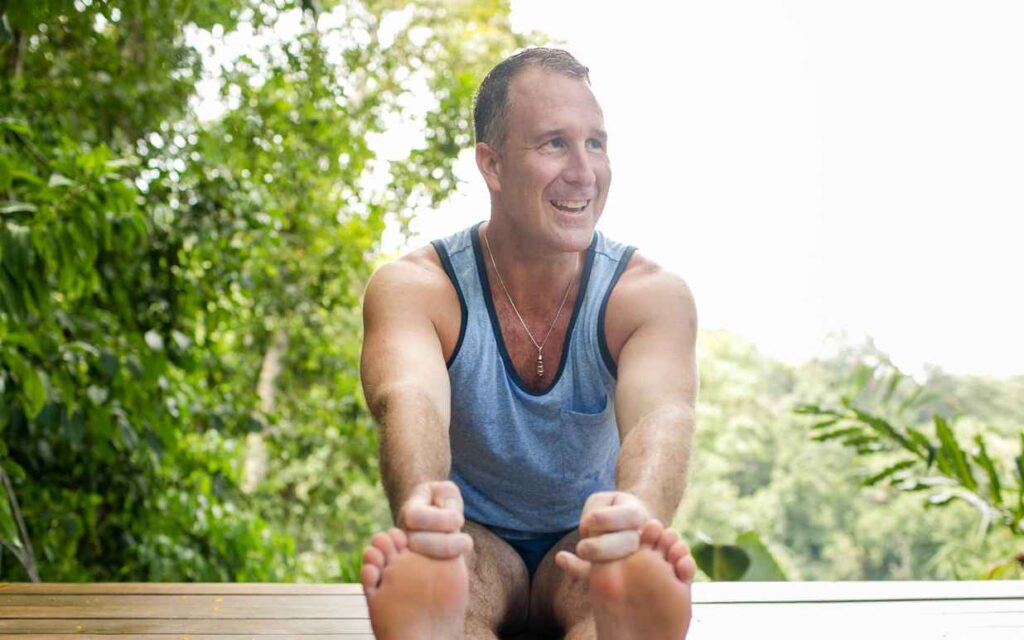
10. Reclined Big Toe: Supta Padangusthasana
Start lying on the floor. Bend into one knee and press your thigh into your chest. Ground the leg that’s on the floor. Take your yoga strap and place it around the lifted foot. Place both sides of the yoga strap into the hand on the same side of the body. Begin to straighten your leg, keeping your foot flexed and your heel reaching towards the sky.
11. Corpse: Savasana
Stretch your legs out along with your arms beside your body. Let your limbs fall heavy into the floor with your palms facing the sky. Snuggle your shoulder blades underneath your body to create a shelf for your heart. Rest in Savasana for 3-11 minutes, soaking in the nutrients of your practice.
To sum it up
What causes tight hamstrings varies for each individual. Genetics may play a role in the tightness of your muscles. If you’re experiencing tight hamstrings and lower back pain, fixing your posture will benefit your health in the long run, too.
Whatever the case, treatment for tight hamstrings is possible. Follow the simple remedies and yoga poses for tight hamstrings above, and you’ll be well on your way to healing.
Just remember . . .
The answer is not to “stretch out” tight hamstrings. Instead, practice these yoga postures for tight hamstrings with awareness using the principles of Applied Yoga Anatomy + Muscle Activation™.
If you’re truly ready to heal your body and start living without pain, you won’t want to miss my free webinar on easy Muscle Activation Techniques.
As the saying goes . . . “The greatest wealth is health.”
Hop over to the free webinar to get simple, straightforward tips to nix pain for good — and start focusing your energy on more of the things that matter.


